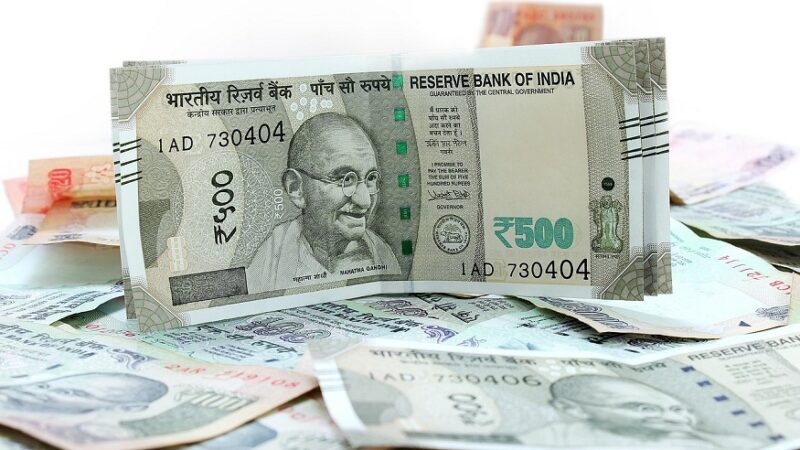MSME Loans: Your Complete Guide To Qualifying For Funding

MSME loans are unsecured loans offered by several financial institutions to help entrepreneurs meet various business-related expenses. Since MSMEs do not have any collateral, they will have to provide the financial institution with certain documents and other information such as personal details and financial records. This blog post highlights the steps that you need to take in order to qualify for funding from MSME loans.
Introduction
MSME loans are a type of financing provided to small and medium enterprises (SMEs) in India. The Indian government offers a variety of schemes and programmes to support the growth of SMEs, including MSME loans.
Qualifying for an MSME loan is not always easy, but it is possible with the right preparation and understanding of the process. In this guide, we will walk you through everything you need to know about MSME loans, from eligibility criteria to how to apply.
We hope that after reading this guide, you will feel confident in your ability to qualify for an MSME loan and grow your business.
What is an MSME loan?
Micro, small, and medium enterprises (MSMEs) are the backbone of any developing economy. They contribute significantly to employment generation and GDP growth. However, they often face difficulty in accessing credit from traditional financial institutions.
MSME loans are designed to address this issue by providing much-needed funding to these businesses. These loans can be used for a variety of purposes, such as working capital, business expansion, or purchase of machinery and equipment.
To qualify for an MSME loan, businesses must have a minimum annual turnover of Rs. 5 lakhs. They must also be registered with the appropriate authorities. The loan amount available will depend on the financial needs of the business and its repayment capacity.
MSME loans are typically offered at lower interest rates than other types of business loans. This makes them an attractive option for small businesses looking to finance their operations or expand their businesses.
How to qualify for an MSME loan?
Micro, small and medium enterprises (MSMEs) are the backbone of any developing economy. They contribute significantly to the Gross Domestic Product (GDP), employment, exports and industrial growth.
However, MSMEs often face difficulties in accessing formal credit from financial institutions. This is where MSME loans come in. MSME loans are designed to provide financial assistance to small businesses.
To qualify for an MSME loan, you must:
– Be a micro, small or medium enterprise as defined by the MSMED Act, 2006
– Have a sound business plan and a track record of profitability
– Be registered with the appropriate authorities
– Have a minimum turnover of Rs. 5 lakhs per annum
– Be located in an eligible area as defined by the Ministry of Micro, Small and Medium Enterprises
Where do I apply for an MSME loan?
There are a few ways that you can apply for an MSME loan. The first way is to go through your local bank or credit union. Many banks and credit unions offer MSME loans, so this is a great option if you have a good relationship with your financial institution. You can also check here at 1Click Capital for your loan requirements.
Another way to apply for an MSME loan is through the government’s website. The government offers several different programs that can help you get the funding you need to start or grow your business.
Finally, you can also apply for an MSME loan through private lenders. There are many private lenders who specialize in loans for small businesses. This is a great option if you don’t qualify for a loan from a bank or credit union.
What are the interest rates of MSME loans?
The interest rates of MSME loans can vary depending on the type of loan you are applying for, as well as the lender you are working with. However, in general, MSME loans tend to have relatively low interest rates when compared to other types of loans. This is because MSMEs are typically considered to be lower-risk borrowers.
Interest rates on MSME loans can also vary depending on the repayment period you select. shorter repayment periods will typically have higher interest rates, while longer repayment periods will have lower interest rates. Ultimately, it is up to you to select the repayment period that best fits your needs and budget.
If you are interested in learning more about the interest rates associated with MSME loans, we encourage you to speak with a loan specialist. They will be able to provide you with tailored information based on your specific situation.
Types of MSME loans.
There are many types of MSME loans available to business owners, each with its own specific purpose and requirements. The most common types of MSME loans are:
1. Start-up Loans:
These loans are designed for businesses that are just starting out and need funding to get their operations off the ground. Start-up loans typically have lower interest rates and longer repayment terms than other types of loans, making them a good option for businesses with limited financial history.
2. Expansion Loans:
Expansion loans are intended for businesses that are already up and running but need additional funding to grow. These loans often have higher interest rates than start-up loans, but they can be used for a variety of purposes, such as expanding your product line or opening new locations.
3. Equipment Loans:
Equipment loans are specifically for businesses that need to purchase new equipment or replace old equipment. These loans usually have shorter repayment terms than other types of business loans, since the equipment serves as collateral for the loan.
4. Working Capital Loans:
Working capital loans are used to cover short-term expenses, such as inventory costs or payroll expenses. These loans usually have high interest rates and short repayment terms, so they should only be used for necessary expenses.
There are many types of MSME loans available to small businesses in India. The most common type of loan is the working capital loan, which can be used for a variety of purposes including inventory, payroll, and other day-to-day expenses.
Other types of MSME loans include term loans, which are typically used for larger purchases or expansion projects; equipment loans, which can be used to finance the purchase of new machinery or equipment; and business acquisition loans, which can be used to purchase an existing business.
Qualifying for an MSME loan is relatively easy, but it is important to compare interest rates and terms from different lenders before applying. Most importantly, be sure to have a clear understanding of your business’s financial needs and repayment ability before taking out a loan.
Conclusion
Qualifying for an MSME loan is not as difficult as you might think. With a little research and the right approach, you can easily get the funding you need to grow your business. We hope that this guide has given you the insights you need to qualify for an MSME loan and get the funding you need to take your business to the next level.






